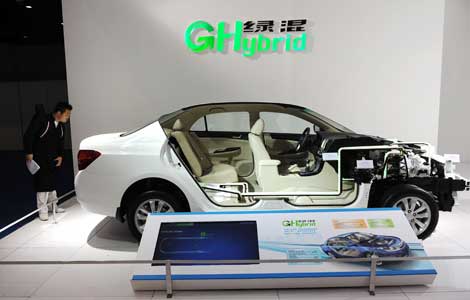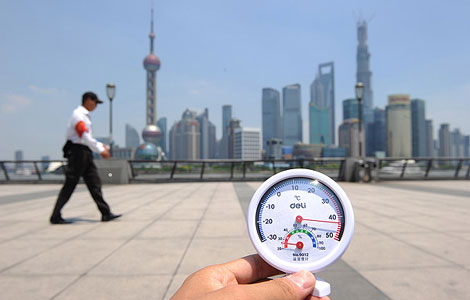Lack of power cuts signals weakness
Updated: 2013-08-07 07:16
By Wei Tian in Shanghai (China Daily)
|
||||||||
An absence of power shortages during the summer peak this year alleviated the surging demand in residential usage, but also reflected weakening activity in faltering industrial sectors.
As the heat wave that engulfed the country persists, many areas have reported record levels for monthly power consumption in July.
In East China's Jiangsu province, where the mercury hit a 50-year high, power consumption in the past month grew 13 percent, making it the first province in the country to use more than 50 billion kilowatts of electricity in a single month.
Shanghai residents are seeing increases in their electricity bills because of more frequent use of air conditioning equipment. And due to the ladder power pricing system, which means they have to pay much more for excessive usage, some are even calling for government subsidies to ease their burden.
However, amid the complaints of residential users, the criticism of manufacturers, who would normally face power shortages at this time of the year, has not yet been heard.
"By this time in previous years, we would have already received at least twice the notices for power supply rationing, but there are none yet," said Li Xia, an employee at a manufacturing company in Jiangxi province.
Factories usually had to give way to residents during the summer peak period of electricity demand, but such rationing measures were not yet necessary this year, an official at the Beijing division of State Grid Electric Power Co was quoted by The Beijing News as saying. Similar statements were also made by State Grid units in provinces including Anhui and Jiangxi.
However, the generosity of power companies has brought more concern than a sense of relief for experts.
Power consumption was one of the three figures brought up by The Economist magazine as a more accurate indicator of the Chinese economy than GDP. The figure, together with railway freight volumes and bank loans, is known as the Li Keqiang Index.
Data from the China Electricity Council showed power consumption in the first half of the year grew 5.1 percent, 0.4 percentage point slower than a year before.
"Power supply and demand are balanced when the economy is on track, and power shortages were a result of an unexpected surge in power usage in cases such as exceptional heat waves," said Li Huiyong, chief economist at Shenyin & Wanguo Securities.
"However, as residential power consumption surged during the heat wave, a still slower growth can be only attributed to declining industrial power usage," Li said.
Li ruled out the possibility that less power consumption in the industrial sector was due to the country's economic transformation and fewer high-energy consuming factories, arguing that there is not yet a notable change in the economic structure..
According to the China Electricity Council, the industrial sector saw a year-on-year growth in power usage of 4.9 percent in the first half. In comparison, power usage by the service sector rose 9.3 percent year-on-year in the same period.
The figures were in line with the HSBC Manufacturing Purchasing Managers' Index, which stood at 47.7 in July, down from 48.2 in June. The 11-month low indicated further contraction of industrial activities amid excessive production capacity. In comparison, the Services Purchasing Managers' Index was at 51.3, signaling a modest increase in business activity in the sector.
"Power supply and demand will be in an overall balanced manner in the second half, while there will be an electricity surplus in the northeast and northwest," said a statement on the China Electricity Council's website.
Although the council said power consumption will bounce back during the summer months, Lin Boqiang, director of the China Center for Energy Economic Research at Xiamen University, said that power shortages as those seen in previous years are not expected.
Power consumption by the industrial sector accounted for 73.8 percent of the total volume. That proportion shrank slightly by 0.2 percentage point compared with that of the first half of 2012.
weitian@chinadaily.com.cn
(China Daily USA 08/07/2013 page15)
Most Viewed
Editor's Picks

|

|

|

|

|

|
Today's Top News
China vows to severely punish newborn traffickers
Sri Lanka suspends NZ milk powder imports
PV firms face risks despite EU deal
Small firms should also think global
China issues record fines to dairy firms
US, China trade deficit narrows
NBA courts Sina Corp
EC denies delay in telecoms probes
US Weekly

|

|












